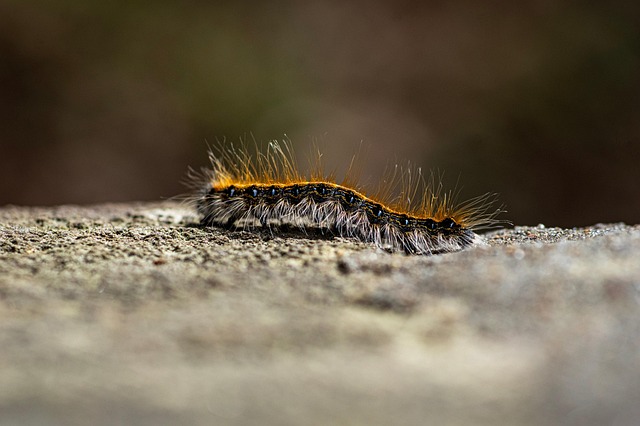Wood boring insects like beetles, termites, and carpenter ants pose year-round threats to wooden structures and furniture. Effective wood boring insects removal requires identifying the specific pest, understanding their life cycles, and implementing targeted prevention strategies aligned with seasonal changes. Key strategies include regular inspections, sealing entry points, proper ventilation, integrated pest management (IPM), and consistent maintenance. By adopting these practices, homeowners and professionals can prevent destructive infestations, protect investments, and ensure the longevity of wooden structures.
In the relentless battle against wood boring insects, a year-round approach is key to preventing damage and ensuring structural integrity. This comprehensive guide delves into effective strategies for managing these pests, focusing on seasonal prevention programs. Understanding the common types of wood borers and their impact is crucial, setting the stage for smart, season-specific control measures. Discover best practices for implementing comprehensive programs, long-term monitoring techniques, and treatment methods to achieve lasting protection against wood boring insects removal.
Understanding Wood Boring Insects: Common Types and Their Impact
Wood boring insects are a year-round concern for property owners, especially those with wooden structures or furniture. Understanding these pests is key to effective prevention and management. Common types include beetles, termites, and carpenter ants, each with unique behaviors and impacts. Beetles, such as powderpost beetles, lay their eggs in wood, and the larvae burrow into the material, causing significant structural damage over time. Termites, known for their colony structure, feed on cellulose in wood, leading to extensive structural deterioration if left unchecked. Carpenter ants, while not as destructive as termites, also bore into wood to create nesting galleries, which can weaken structures.
Effective wood boring insects removal requires a multi-pronged approach, including identifying the specific pest, understanding their life cycles, and implementing targeted prevention strategies. Seasonal programs are particularly beneficial, as they allow for proactive measures during different stages of insect activity. By addressing these pests proactively, property owners can protect their investments, preserve wooden structures and furniture, and avoid costly repairs or replacements associated with wood boring insects removal.
Season-Smart Prevention Strategies for Effective Pest Management
In the ever-changing seasons, so too do the habits and behaviors of wood-boring insects. A season-smart prevention strategy is therefore key to effective, year-round pest management. By understanding the life cycles and activity patterns of these pests, homeowners and professionals can implement tailored measures to deter and control their presence.
During spring and summer, when wood boring insects are most active, regular inspections and maintenance become paramount. This includes sealing entry points, ensuring proper ventilation, and applying preventive treatments. Come autumn, a focus on reducing moisture levels in wood structures helps mitigate the appeal of these pests. Lastly, winter offers an opportunity to strengthen defenses with deep treatments and the use of pest-repellent barriers, preparing for the next cycle of insect activity.
Implementing Year-Round Control Programs: Tips and Best Practices
Implementing year-round control programs for wood pest management is a proactive approach that offers numerous benefits, including the prevention of destructive wood boring insect infestations. The key lies in consistent monitoring and tailored treatment strategies. By understanding the life cycles of common pests like termites and carpenter ants, professionals can design effective plans. Regular inspections are crucial; examining structures during different seasons helps identify potential entry points and early signs of infestation.
Best practices include establishing a seasonal prevention schedule, ensuring proper sealing and ventilation, and using integrated pest management (IPM) techniques. IPM combines biological, cultural, physical, and chemical methods to manage pests humanely. For instance, targeting wood-boring insects with targeted treatments during specific stages of their lifecycle can be highly effective. Additionally, maintaining a clean and clutter-free environment around the property reduces hiding spots for pests, making prevention more manageable.
Long-Term Solutions: Monitoring, Treatment, and Maintenance Techniques
Implementing long-term solutions for wood pest management requires a holistic approach, encompassing continuous monitoring, targeted treatments, and consistent maintenance. Regular inspections are crucial to identifying early signs of wood boring insects infestation. This proactive strategy involves visually examining wooden structures, especially in areas prone to moisture buildup or structural damage. By staying vigilant, homeowners and property managers can detect potential issues before they escalate into full-blown pest problems.
Treatment methods should be tailored to specific pests, such as carpenter ants or termites. Professional pest control services offer a range of solutions, from non-chemical repellents to targeted chemical applications. Regular maintenance includes sealing entry points, ensuring proper ventilation, and addressing any structural weaknesses. These measures not only prevent wood boring insects removal but also contribute to the overall health and longevity of wooden elements in both residential and commercial settings.
In conclusion, a comprehensive approach to wood pest management involves understanding the behavior of boring insects, adopting season-smart prevention strategies, and implementing year-round control programs. By combining these practices with long-term monitoring and treatment techniques, homeowners and professionals alike can effectively mitigate wood boring insect damage and ensure the longevity of wooden structures. Remember, proactive measures are key to successful wood boring insects removal and maintaining a healthy environment.
